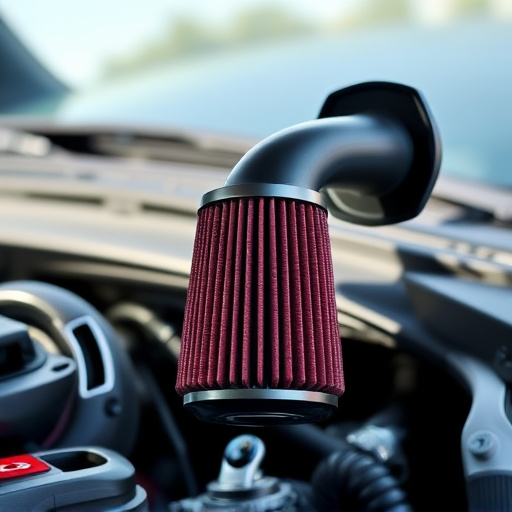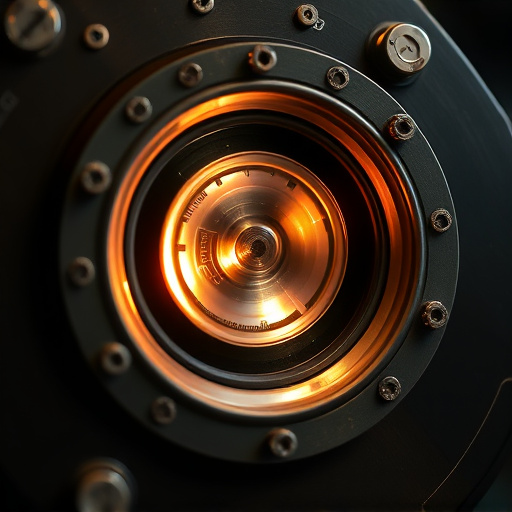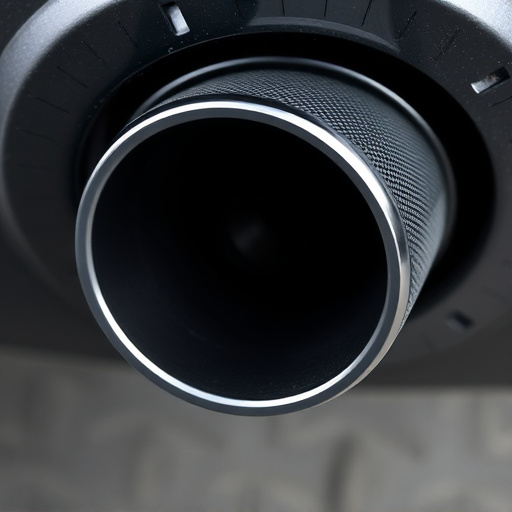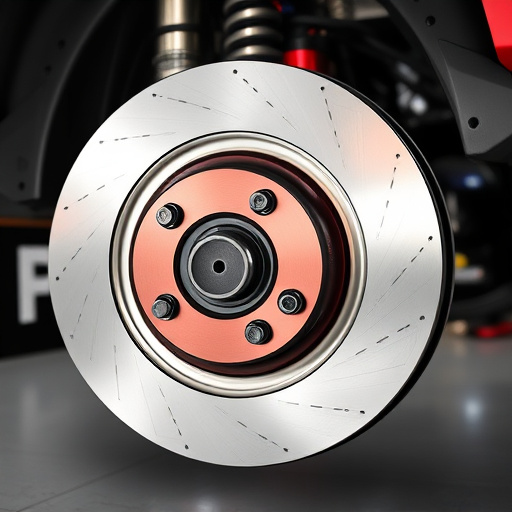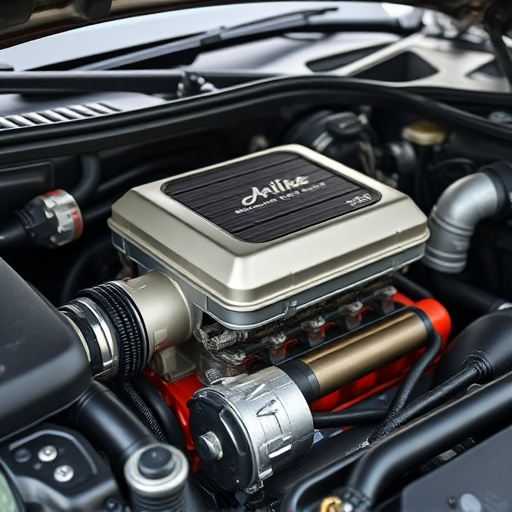The turbo wastegate is a critical component in turbocharged engines, managing exhaust gas flow and optimizing performance by controlling boost pressure across RPM ranges. Precise adjustments enhance acceleration, throttle response, and overall engine performance, especially when paired with upgrades like high-flow air filters and upgraded brakes. It facilitates efficient exhaust flow management, improves fuel economy, reduces emissions, and influences boost pressure buildup for rapid acceleration.
The turbo wastegate, a pivotal component in turbocharged engines, regulates exhaust flow to control boost pressure. This intricate mechanism significantly influences engine performance and efficiency. In this article, we delve into the fundamental role of the turbo wastegate, analyzing its impact on the boost curve and acceleration. We explore how optimizing wastegate function enhances overall engine efficiency, providing a deeper understanding of this crucial component in turbocharged powerplants.
- Understanding Turbo Wastegate: Its Role in Engine Performance
- Boost Curve Analysis: How Wastegate Impacts Acceleration
- Optimizing Delivery: Wastegate's Effect on Turbocharged Engines' Efficiency
Understanding Turbo Wastegate: Its Role in Engine Performance
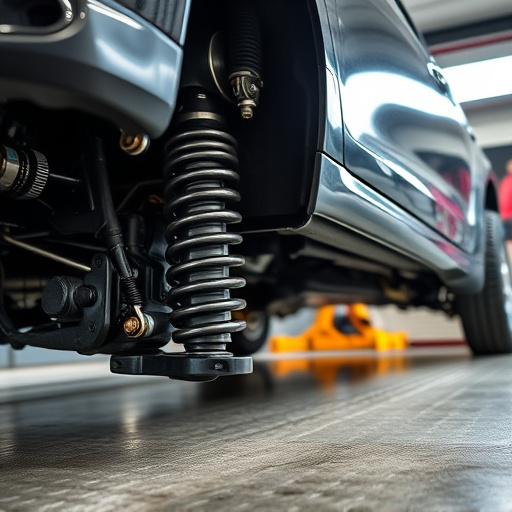
The turbo wastegate is a critical component in turbocharged engines, playing a pivotal role in engine performance and efficiency. It acts as a valve that controls the flow of exhaust gases from the turbine to the atmosphere, allowing for precise control over the turbocharger’s boost pressure. By regulating this pressure, the wastegate ensures optimal engine operation across various RPM ranges.
When driven at lower speeds, the wastegate allows most of the exhaust to pass directly through, minimizing backpressure and maintaining efficient power delivery. As the engine revs higher, however, the wastegate gradually closes, increasing backpressure and forcing more air into the turbocharger’s compressor. This action creates a boost in intake pressure, resulting in enhanced performance, particularly during acceleration. The strategic control of the wastegate thus influences both the boost curve and the overall responsiveness of the vehicle, impacting its power output and fuel efficiency.
Boost Curve Analysis: How Wastegate Impacts Acceleration
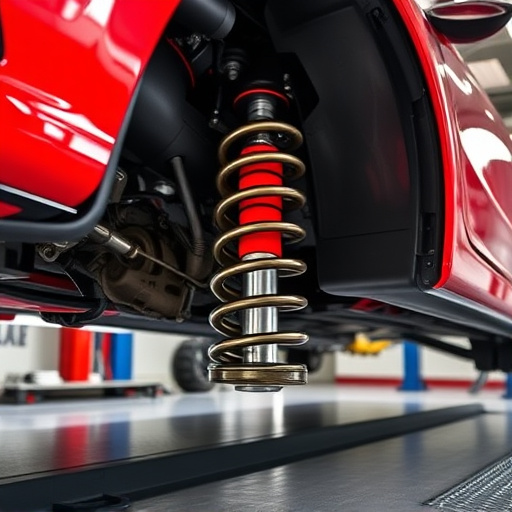
The turbo wastegate plays a pivotal role in shaping the boost curve and overall performance characteristics of turbocharged engines. This component controls the flow of exhaust gases from the turbine side of the turbocharger to the mufflers, thereby influencing the amount of air and fuel mixture being compressed by the compressor. A meticulous analysis of the boost curve reveals how minute adjustments to wastegate settings can dramatically affect acceleration capabilities.
When optimizing for better acceleration, engineers carefully calibrate the wastegate to ensure a smooth transition between low and high-speed boost. By managing exhaust flow efficiently, the turbo wastegate allows for rapid and controlled build-up of boost pressure, enabling the engine to deliver more power at lower RPMs. This direct impact on the boost curve translates into improved throttle response and overall driving pleasure, making it an essential consideration in tuning turbocharged vehicles, especially when enhancing performance with components like high-flow air filter kits or upgraded brake pads.
Optimizing Delivery: Wastegate's Effect on Turbocharged Engines' Efficiency
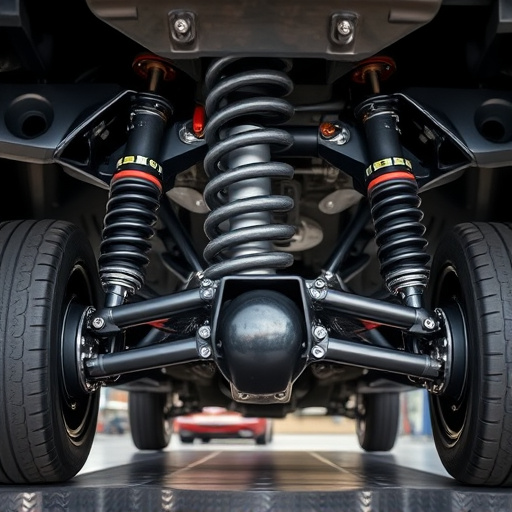
The turbo wastegate plays a pivotal role in optimizing delivery and enhancing the efficiency of turbocharged engines. By controlling the flow of exhaust gases, it ensures that the turbine wheel receives the optimal amount of energy from the exhaust stream, thereby maximizing the power output and torque curve. This precise regulation allows for a more efficient combustion process, as the engine can precisely manage the air-fuel mixture, leading to improved fuel economy and reduced emissions.
Furthermore, the wastegate’s timing and response directly impact the boost pressure build-up, which is crucial for rapid acceleration and overall performance exhaust. When combined with well-designed intake components and coilover kits, a turbocharged engine can deliver a seamless power band, offering both strong low-end torque and high-rev power, ultimately enhancing drivability and driver satisfaction.
The turbo wastegate plays a pivotal role in shaping the performance and efficiency of turbocharged engines. By controlling exhaust flow, it influences the boost curve, enhancing acceleration while optimizing fuel delivery for improved efficiency. Understanding this mechanism is key to unlocking the full potential of turbocharged vehicles, ensuring they deliver both powerful performances and economical running.
